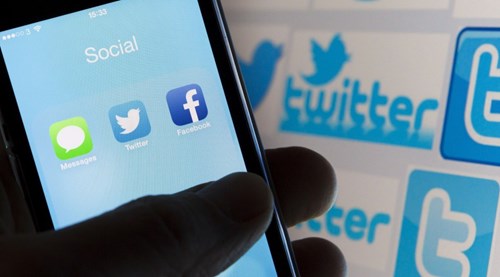
The social media boom of recent years has fundamentally altered the news cycle, removing news organizations as the gatekeepers and providing a platform for users to produce, share and find original content. American forces’ raid on Osama Bin Laden, Whitney Houston’s death, the Hudson River plane landing — these are just a few of many major news stories ordinary citizens broke on Twitter first. Professional journalists, meanwhile, use Twitter all the time to break news quickly before writing up full articles. But new research suggests there may be an unexpected downside to getting our news this way: it could trigger PTSD-like symptoms.
Past research has confirmed that health care workers and first-responders who help victims of traumatic events or situations may experience “vicarious traumatization,” in which they become psychologically and emotionally affected by victims’ suffering. Even journalists covering violent news events are counseled on the potential for lasting trauma, and disturbing news content often comes with a warning to readers.
But social media lacks the protections of traditional news sources, and violent stories and images are often shared with little attention to context, explains Dr. Pam Ramsden, of the Faculty of Social Sciences at the University of Bradford in the UK, who led the new study. “Social media has enabled violent stories and graphic images to be watched by the public in unedited horrific detail,” she said. “Watching these events and feeling the anguish of those directly experiencing them may impact on our daily lives.”
With that in mind, Dr. Ramsden and colleagues wanted to see whether people exposed to violent and traumatic events via social media are at risk for the vicarious traumatization usually associated with firsthand exposure to violence. “[W]e wanted to see if people would experience longer lasting effects such as stress and anxiety, and in some cases post-traumatic stress disorders (PTSDs) from viewing these images.”
For the study, the team enrolled 189 men and women with an average age of 37. The participants were exposed to a number of videos and images of violent news events — including suicide bombings, school shootings and the 9/11 terror attack — via social media or the Internet. After viewing these videos and images, the participants were asked to complete a vicarious trauma assessment and questionnaire and a personality questionnaire, as well as undergo a clinical assessment for PTSD.
The researchers found that 22% of the participants scored highly on clinical assessments of PTSD, despite only being exposed to videos and images of the traumatic events, not the events themselves. The more often the participants viewed media of the traumatic events, the more affected they were, the team found. Additionally, participants who were more extroverted were more likely to be affected by the videos and images of violent events — possibly because extroverted, outgoing people are more active on social media and may be exposed repeatedly to the violent content.
According to the Anxiety Disorders Association of America, an estimated 7.7 million Americans age 18 and older have PTSD. To be diagnosed with the disorder, symptoms — which include flashbacks, avoidance, sleep disturbances and mood changes — must continue for more than a month after the traumatic event. The DSM-5, the main diagnostic manual of the American Psychiatric Association, includes a classification of vicarious PTSD for workers — such as police officers or journalists — who might routinely be exposed to disturbing online videos because of their jobs.
But based on the new findings, Dr. Ramsden says the risk of vicarious traumatization may be far more widespread than previously thought: “With increased access to social media and the internet via tablets and smartphones, we need to ensure that people are aware of the risks of viewing these images and that appropriate support is available for those who need it.”
